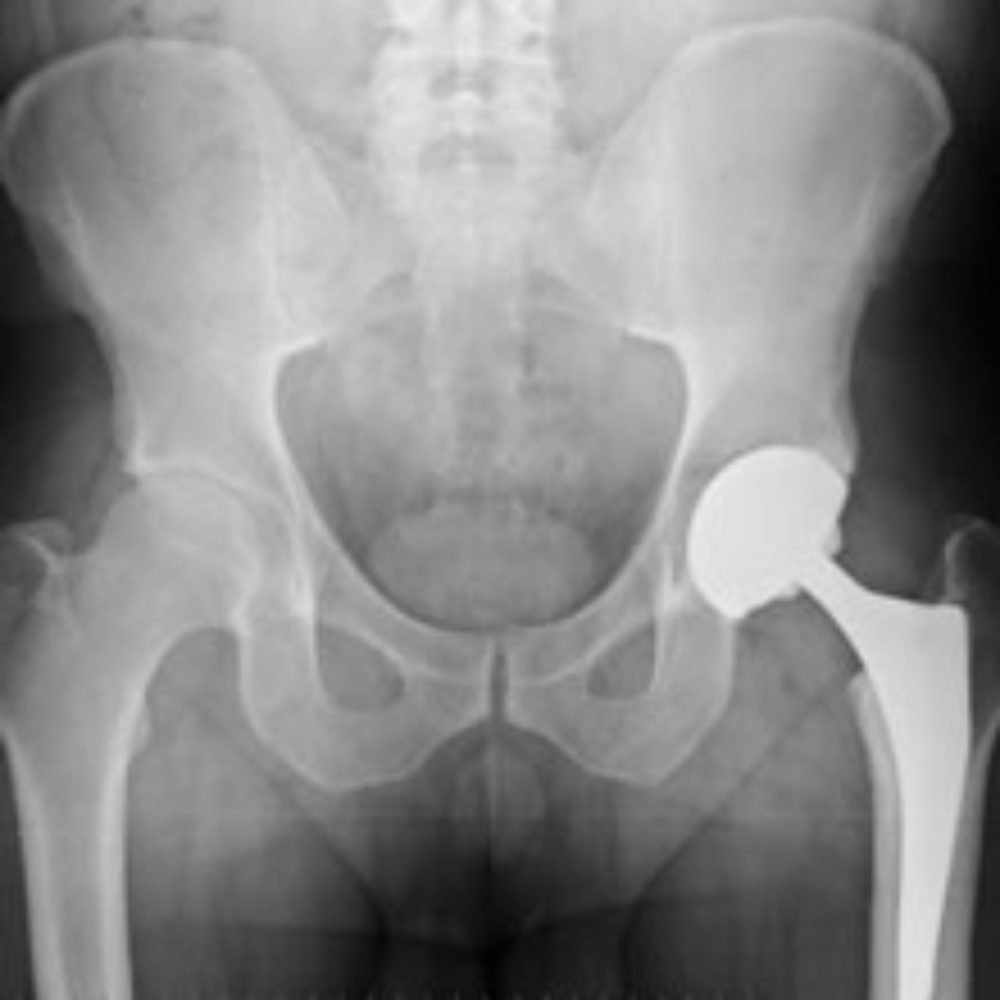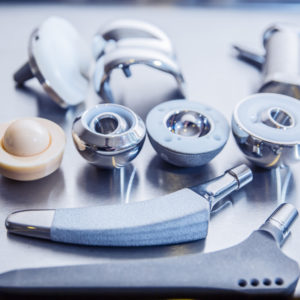Metal-on-Metal Hip Replacement Cancer Risk Not Seen in New Study

The findings of a new study indicate that individuals with metal-on-metal hip replacements do not appear to face an increased risk of cancer, but the research does confirm other health risks associated with the controversial implants.
Metal-on-metal hip replacements have been sold by a number of different manufacturers, featuring a metal femoral head that rotates within a metal acetabular cup.
Unlike other artificial hip designs, which typically feature metal-on-ceramic or metal-on-plastic, the metal-on-metal design may release microscopic metallic debris as the parts rub against each other.

Learn More About
Lawsuits are being reviewed for several different dangerous and defective hip replacement systems.
Learn More About this Lawsuit SEE IF YOU QUALIFY FOR COMPENSATIONIn recent years, a number of hip recalls and reports problems have been associated with metal-on-metal designs, suggesting that the hips may be prone to loosen and fail due to the release of this microscopic debris. In addition, some concerns have been raised about the development of tumors and a potential risk of cancer that may be associated with the design.
In a study published by the medical journal Acta Orthopaedica, researchers from Finland indicate metal-on-metal hip patients may not have to worry about the device increasing their chances of developing cancer.
Researchers conducted a cohort study involving 10,728 patients, indicating that they were unable to find any link between cancer and metal-on-metal hip replacements. The study used data from the Finnish Arthroplasty Register and the Finnish Cancer Registry from the years 2001 through 2011, finding that there was no statistically different overall risk of cancer between patients who had metal hip implants and those who had non-metal hips implanted.
The study did find that metal-on-metal hip systems appeared to more than double the risk of soft tissue sarcoma, and increased the risk of basalioma by about 30%. However, the risk of death was actually lower with all-metal implants than with non-metal implants.
“The overall risk of cancer or risk of death because of cancer is not increased after metal-on-metal hip replacement,” the researchers concluded. “However, metal-on-metal hip implants should not be considered safe until data with longer follow-up time are available.”
Researchers suggested that increased metal ions in the blood from metal particles shed by the devices, known as metallosis, do not appear to be a cancer threat, but do appear to carry some health risks.
“Systemic metal ion toxicity cases due to a failed hip replacement are rare. However, there have been several recent reports of systemic cobalt toxicity following revision of fractured ceramic components, and also in patients with a failed metal-on-metal hip replacement,” the researchers noted in their conclusions. “Possible clinical findings include fatigue, weakness, hypothyroidism, cardimyopathy, polycythemia, visual and hearing impairment, cognitive dysfunction, and neuropathy. Fatal cardiomyopathy due to systemic cobalt toxicity after hip replacement has been reported.”
The study’s findings are similar to those of a 2012 metal hip study published by the British Medical Journal.
Metal Hip Replacement Concerns
Once very popular among orthopedic surgeons, metal-on-metal hip replacement system use has been in sharp decline since 2010, following to a number of recalls and recorded high failure rates worldwide.
In August 2010, a recall for the DePuy ASR metal-on-metal hip system was issued after it was discovered that about one out of every 8 of the hip implants were failing within five years of surgery. More than 10,000 DePuy ASR hip lawsuits have now been filed by individuals who experienced problems.
Thousands of metal-on-metal hip replacement lawsuits have also been filed over other models, including the DePuy Pinnacle, Wright Medical Conserve Plus and the BioMet M2A-Magnum.
In May 2011, the FDA asked device manufacturers to obtain more information about the level at which the metal particles shed by hip replacements becomes dangerous, how much metal they actually shed and to determine the potential side effects of metallosis.
The American Association of Hip and Knee Surgeons, the American Academy of Orthopaedic Surgeons, and The Hip Society issued a consensus statement in January 2014, warning about the risk of problems with metal-on-metal hips. The groups indicated that the risk of failure may be two-to-three time higher than what has been associated with other artificial hip systems.
“It has been estimated that since 1996 more than 1,000,000 MoM articular couples have been implanted worldwide,” according to the statement. “However, with increasing clinical experience, the national joint registries have recently reported the failure of total hip arthroplasty (THA) with MoM bearings to be two to threefold higher than contemporary THA with non-metal-on-metal bearings.”
The statement noted that, in addition to actual catastrophic structural failures, adverse tissue reactions caused by metal debris shed by metal-on-metal hip implants is also being recognized as an important reason for the high failure rates.
While the consensus paper acknowledges that each patient has individual needs and does not outright call for other orthopedic surgeons to never use metal-on-metal hip systems, the statement has been seen by some as the final blow for metal-on-metal designs.
Get more articles like this sent directly to your inbox.
"*" indicates required fields






0 Comments